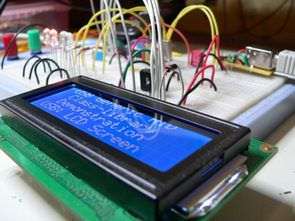
There is an open source developable Framework USB HID application sample circuit application (usb lcd text sending) and visual studio C# source codes for PIC18F series microcontrollers with USB connection.
It means you can quickly develop and test USB device and Windows host application with minimal USB General HID protocol knowledge. The class library gives you a very simple interface from C# to the USB device, and the firmware serves as an example of how to create the custom software needed in the PIC for your device design. It includes the ability to transmit commands and responses to and from a USB device, as well as bi-directional bulk data transfer, allowing you to create more complex data capture applications that require more information to be transmitted quickly from the host to the device. backwards.
USB Generic HID PIC18F4550
Firmware is now targeted for the Microchip C18 compiler (and is no longer compatible with the Hi-Tech PICC18)
Microchip’s Application Library (containing the USB stack) is now separated from the framework code and loaded independently.
The firmware now supports version 2.9a of the USB stack.
USB bootloader support is now included (currently lightly tested)
Both interrupt-based USB polling and non-interruptible USB polling are now supported
The debug stream now supports dynamic text, so you can place live variables and other information into built-in debug functions
Open source firmware code is now correctly separated from Microchip stack code
General code cleanup with better (and more concise) comments and notes
Host Reference Application
Fixed memory leak issue in unmanaged code (readRawReportFromDevice method)
The method used to sign up to receive device event notifications has been changed. This is now handled by the library and does not need a WndProc override in user code.
General code cleanup
The next image shows the reference hardware built on an experimenter’s breadboard (using PIC18F4550):
Reference hardware built on an experimenter’s breadboard
The reference firmware is based on Microchip’s USB stack version 2.9a. The firmware provides a simple structure to create both the USB stack and the PIC18F USB HID firmware. The supplied firmware performs a series of tests (in conjunction with a Windows C# application) that allow quick verification that the firmware and application libraries are working correctly.
To install the firmware, you need to create a directory where you will place both the library and the firmware. You then need to run the Microchip Application Library installer and tell it to install it in a directory called “Microchip Solutions v2011-07-14” under the directory you created in the last step. Firmware tested against version 2.9a of the stack only
The reference implementation uses the C# class library to communicate with the reference firmware. It provides a simple interface to the 5 available commands, allowing you to choose which command you want to send. The app also generates the commands and data to be sent to the device and interprets the data and responses sent back by the firmware to verify that everything is working as it should.
Additionally, the C# class library provides USB device ‘events’ that tell the application when the USB device is connected and disconnected from the host. This is tested by unplugging and plugging in the USB connector while watching the status bar at the bottom of the window. If everything is OK, you should see ‘device added’ and ‘device reserved’ messages. Additionally, the app disables (grays out) the test buttons when no devices are found.
The base C# USB public HID class library provides a base class from which to build applications. The reference implementation defines a class for its ‘specialized’ USB device, which then inherits all accessible functionality from the base class. The application then extends the base class to include its own methods for communicating with the device. Simply put, the specialized class should provide an interface from the commands the device must support (0x80, 0x81, etc.) to the ‘raw’ send and receive methods provided by the class library.
Source: waitingforfriday.com
PIC18F4550 USB Hid project files Alternative link:
Password: 320volt.com
Published: 2010/05/16 Tags: microchip projects, microcontroller projects
Audio Signal Generator Circuit ICL8038 20Hz to 20kHz
ICL8038 20Hz to 20kHz audio signal generator circuit testing of various circuits in more amp circuit can be useful. The heart of the circuit ICL8038 (Precision Waveform Generator / Voltage Controlled Oscillator) frequency adjustments on the circuit with the work being done 100k potentiometer voltage 12 volts DC